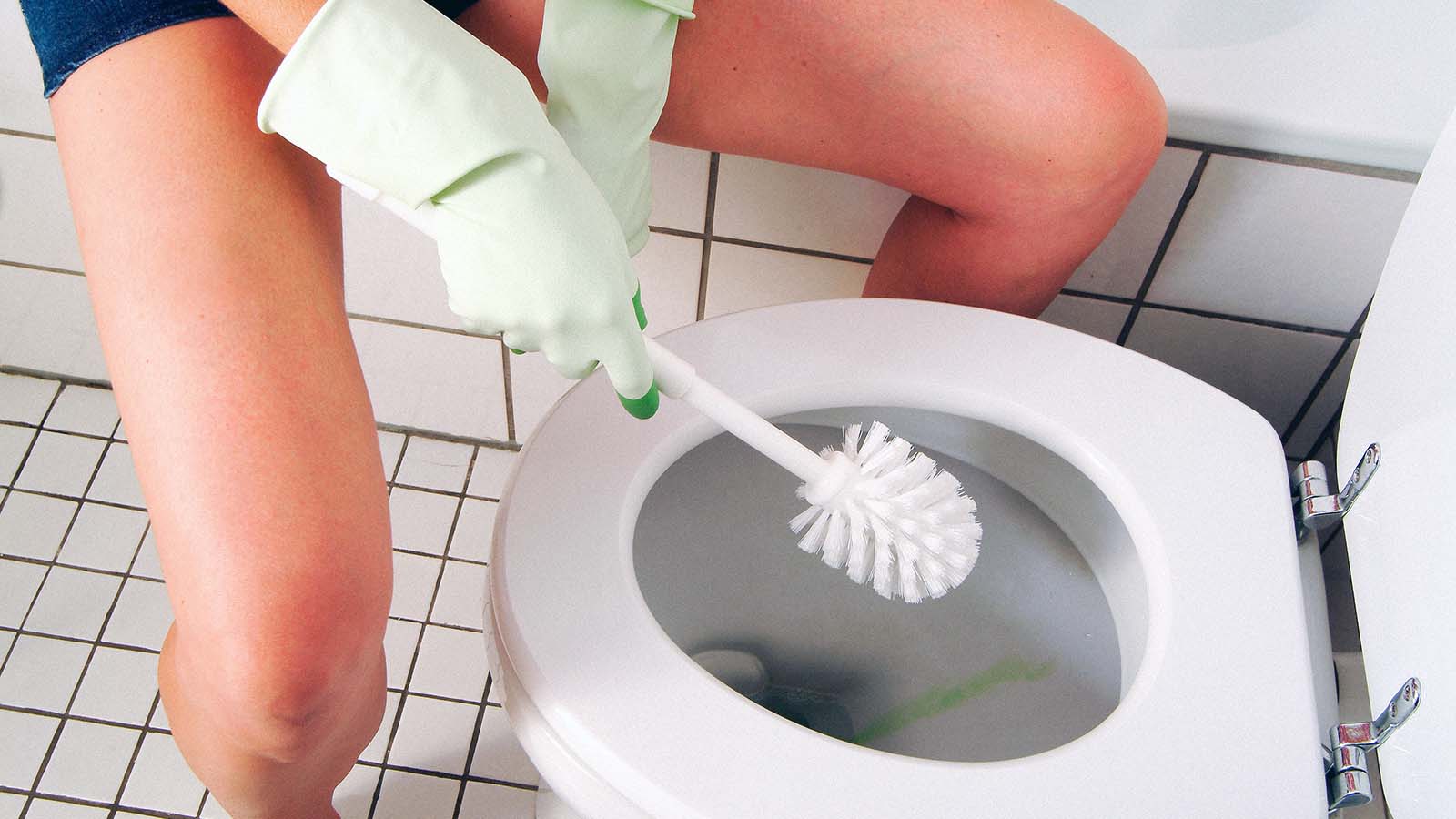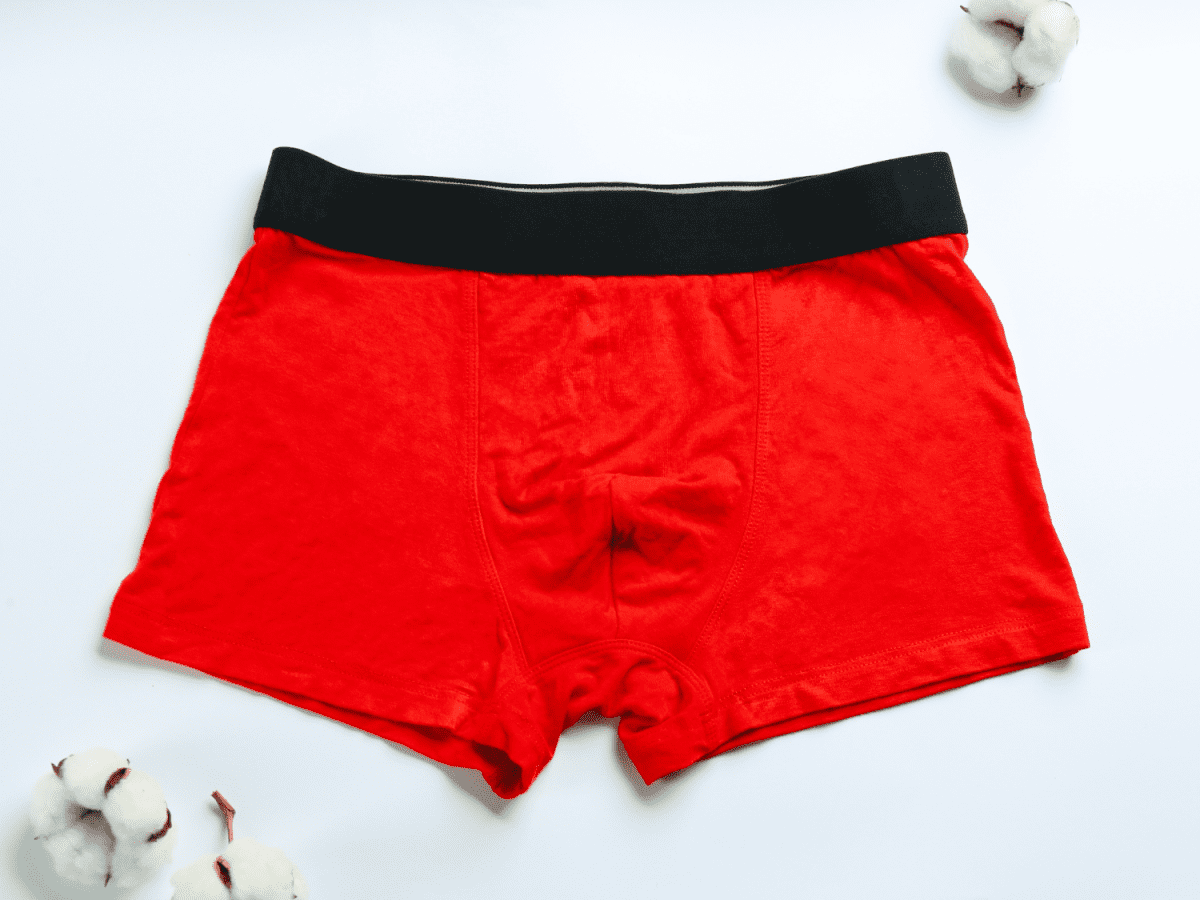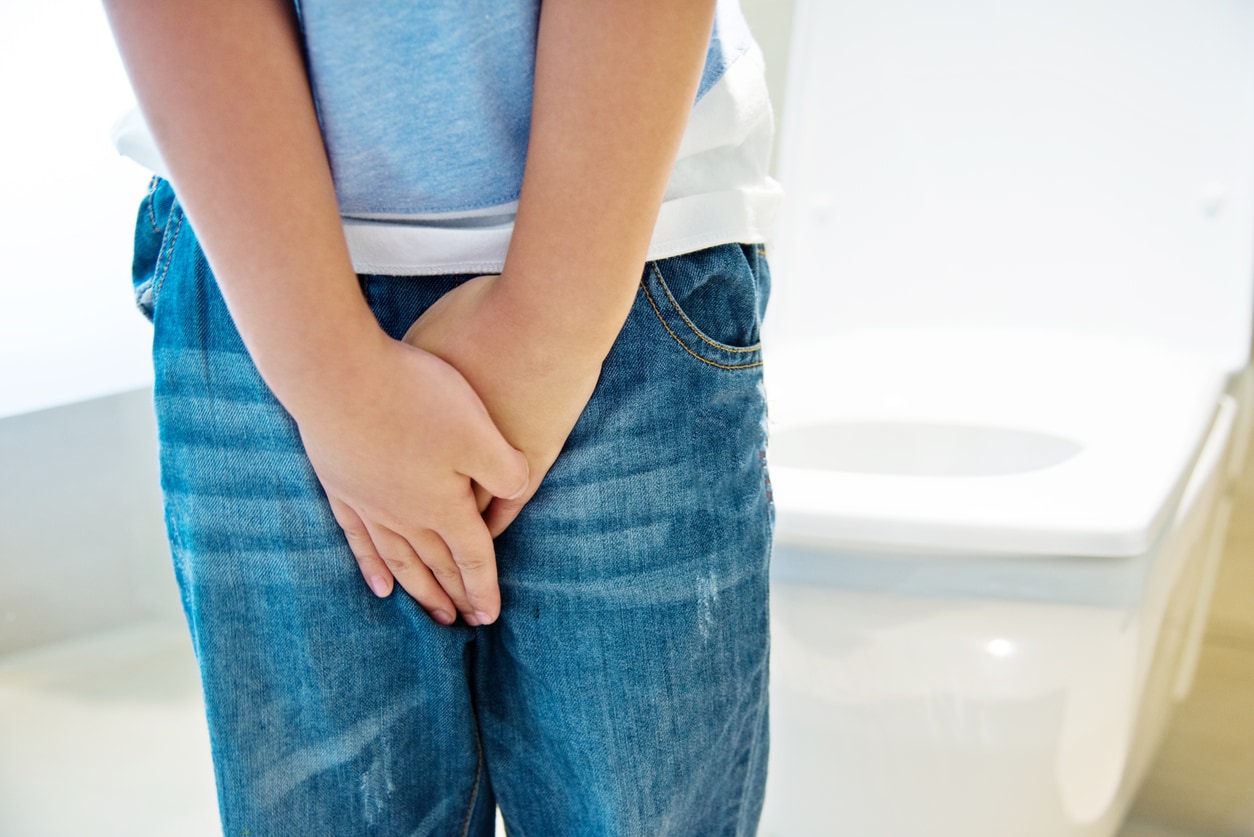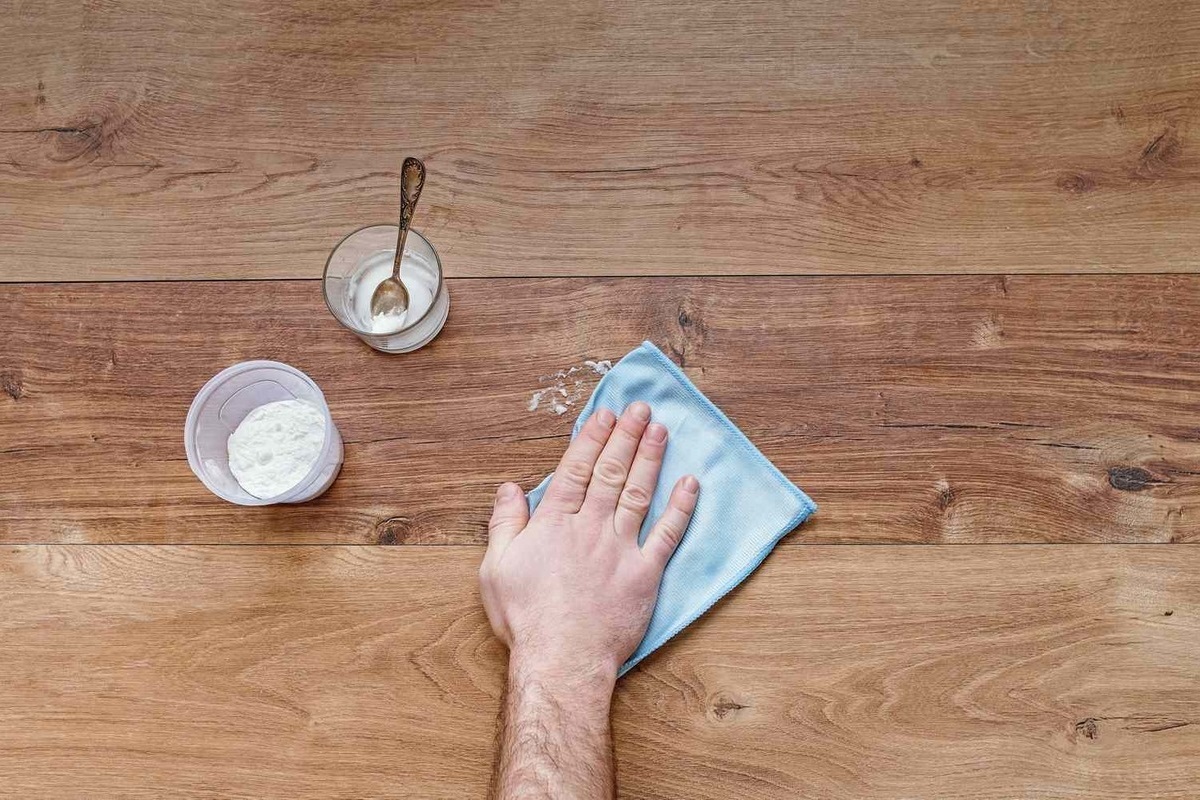

FAQs
Why Do I Leave Skid Marks In The Toilet
Published: July 31, 2023
Find out the reasons behind leaving skid marks in the toilet with this comprehensive guide. General questions answered to help you tackle this common issue.
(Many of the links in this article redirect to a specific reviewed product. Your purchase of these products through affiliate links helps to generate commission for Under-tec.com, at no extra cost. Learn more)
Table of Contents
Introduction
Skid marks in the toilet are a common occurrence that many people experience but may feel uncomfortable discussing. These unsightly stains can be embarrassing and leave individuals wondering why they occur and how to prevent them. In this article, we will explore the causes of skid marks and provide tips for minimizing their appearance.
Skid marks, also known as streak marks or skid stains, are remnants of fecal matter that are left behind on the toilet bowl after flushing. They can vary in appearance, ranging from light smudges to darker streaks. While skid marks are generally harmless and do not pose a health risk, they can be a source of embarrassment or concern for some individuals.
Understanding why skid marks occur is the first step in effectively addressing the issue. Several factors can contribute to the formation of skid marks, including dietary habits, digestive issues, and improper wiping technique. By analyzing these factors, we can develop strategies to minimize the occurrence of skid marks and promote proper hygiene.
In the following sections, we will delve deeper into the possible causes of skid marks and provide practical solutions for prevention. Whether you are experiencing skid marks yourself or simply interested in learning more about this common phenomenon, this article aims to inform and empower readers with valuable insights to maintain a clean and hygienic toilet.
Understanding Skid Marks
Skid marks in the toilet are the result of residual fecal matter that is left on the surface of the bowl after flushing. This can happen due to a variety of reasons, including the consistency of the stool, the pressure applied during bowel movements, and the effectiveness of the flushing mechanism. Understanding why skid marks occur is essential in finding ways to prevent them.
One common cause of skid marks is the presence of sticky or soft stools. When the stool is more malleable, it is more likely to adhere to the toilet bowl surface instead of being completely flushed away. This can leave behind residue that forms as skid marks. Similarly, if the stool breaks apart easily, it can create small particles that are challenging to fully remove, resulting in skid marks.
The amount of pressure applied during bowel movements can also contribute to the formation of skid marks. When excessive force is used, it can cause the stool to smear on the bowl rather than being cleanly eliminated. Additionally, if the bowel movement is rapid or forceful, the water in the toilet bowl may not have enough time to swirl around and effectively remove all traces of fecal matter.
Another factor that can lead to skid marks is the effectiveness of the flushing mechanism. If the toilet does not have enough water pressure or the flush is not strong enough, it may not adequately rinse away all the residue, leaving behind skid marks. Additionally, older or inefficient toilets may not have the flushing power needed to ensure a thorough cleansing.
It’s important to note that skid marks are not necessarily an indicator of poor hygiene or an unclean individual. Even those who practice good hygiene habits can experience skid marks occasionally due to the aforementioned factors. However, it is still essential to take steps to prevent them and maintain a clean and fresh toilet bowl.
Possible Causes of Skid Marks
Skid marks in the toilet can be caused by a variety of factors, ranging from dietary habits to digestive issues to improper wiping technique. Understanding these causes can help individuals identify the underlying reasons behind their skid marks and take appropriate measures to prevent them in the future.
Dietary Factors: The foods we consume can have a significant impact on the consistency and texture of our stools. A diet low in fiber and high in processed foods can lead to harder and dryer stools, making them more prone to leaving skid marks. On the other hand, a diet rich in fiber, fruits, and vegetables promotes softer and bulkier stools that are easier to eliminate and less likely to stick to the toilet bowl.
Digestive Issues: Certain digestive conditions can contribute to skid marks. For example, individuals with conditions like irritable bowel syndrome (IBS) or inflammatory bowel disease (IBD) may experience more frequent and looser stools, increasing the likelihood of skid marks. Similarly, conditions like constipation or diarrhea can alter stool consistency and make it more difficult to achieve a clean flush.
Improper Wiping Technique: The way we wipe after using the toilet can also play a role in the formation of skid marks. Improper wiping technique can leave behind residue, which may then transfer to the toilet bowl. It is crucial to ensure thorough and effective wiping using gentle, front-to-back motions to minimize the risk of residue remaining on the skin or the toilet bowl.
Insufficient Flushing: Inadequate flushing can be another cause of skid marks. If the toilet does not have enough water pressure or if the flush is not strong enough, it may not be able to fully remove all traces of fecal matter. This is especially common with older or inefficient toilets that may lack the necessary flushing power to ensure a clean flush.
Dehydration: Insufficient hydration can contribute to harder stools that are more likely to leave skid marks. Proper hydration helps maintain stool softness and bulk, making them easier to eliminate and reducing the likelihood of residue sticking to the toilet bowl. It is important to drink enough water throughout the day to support healthy digestion and prevent dehydration-related skid marks.
In the next sections, we will discuss various tips and strategies to prevent skid marks, addressing these underlying causes and promoting better bowel movements and toilet hygiene.
Dietary Factors
Diet plays a significant role in the formation of skid marks in the toilet. The foods we eat can affect the consistency, bulkiness, and ease of elimination of stools. Making adjustments to our diet can help prevent skid marks and promote healthier bowel movements.
Fiber Intake: A lack of dietary fiber is a common culprit behind skid marks. Fiber adds bulk to the stool, making it softer and easier to pass. Additionally, fiber helps regulate bowel movements, preventing both constipation and diarrhea, which can contribute to skid marks. It is recommended to consume a variety of fiber-rich foods such as fruits, vegetables, whole grains, and legumes to ensure an adequate fiber intake.
Water Consumption: Not only is water crucial for overall hydration, but it also plays a vital role in digestion and stool consistency. Insufficient water intake can lead to harder and drier stools, increasing the likelihood of skid marks. It is important to drink an adequate amount of water throughout the day to ensure proper hydration and support healthy bowel movements.
Processed Foods: A diet high in processed foods, such as fast food, packaged snacks, and sugary treats, can contribute to skid marks. These foods are often low in fiber and nutrients, leading to harder and dryer stools. Incorporating more whole, unprocessed foods into the diet can help promote softer and healthier stools, reducing the occurrence of skid marks.
Fruits and Vegetables: Eating a variety of fruits and vegetables is essential for good digestive health. They are rich in fiber, water, and nutrients, which help to soften the stool and promote regular bowel movements. Including a colorful array of fruits and vegetables in meals can not only enhance the nutritional value of the diet but also contribute to smoother elimination and reduce the likelihood of skid marks.
Probiotic Foods: Probiotics are beneficial bacteria that support a healthy gut. Consuming probiotic-rich foods, such as yogurt, kefir, sauerkraut, and kimchi, can help maintain a balanced gut flora and improve digestion. A healthy gut microbiome promotes regular bowel movements and reduces the incidence of skid marks.
Food Sensitivities: Some individuals may have specific food sensitivities or intolerances that can contribute to digestive issues and skid marks. Common culprits include gluten, lactose, and certain artificial additives. Identifying and avoiding trigger foods can help improve digestion and reduce the occurrence of skid marks.
Adopting a balanced and nutritious diet that includes plenty of fiber, water, and probiotic-rich foods, while minimizing processed foods, is essential for preventing skid marks. A healthy diet supports proper digestion, promotes regular bowel movements, and reduces the likelihood of sticky stools adhering to the toilet bowl.
Digestive Issues
Digestive issues can contribute to the occurrence of skid marks in the toilet. Conditions such as irritable bowel syndrome (IBS), inflammatory bowel disease (IBD), constipation, and diarrhea can alter stool consistency and make it more challenging to achieve a clean flush. Understanding and addressing these digestive issues can help minimize the formation of skid marks.
Irritable Bowel Syndrome (IBS): IBS is a common digestive disorder that can cause a range of symptoms, including abdominal pain, bloating, and irregular bowel movements. Some individuals with IBS experience frequent loose stools, which can increase the likelihood of skid marks. Managing IBS through lifestyle changes and working with a healthcare provider can improve bowel regularity and reduce skid mark occurrence.
Inflammatory Bowel Disease (IBD): Inflammatory bowel disease, which includes conditions like Crohn’s disease and ulcerative colitis, can cause inflammation and ulcers in the digestive tract. These conditions often result in diarrhea and softer stools, increasing the risk of skid marks. Proper medical management and adhering to a treatment plan can help control symptoms and minimize skid mark occurrence.
Constipation: Chronic constipation can lead to harder and dryer stools, making them more likely to leave skid marks. Factors contributing to constipation include inadequate fiber intake, lack of physical activity, dehydration, and certain medications. Addressing constipation through dietary changes, increased water intake, regular exercise, and potential medical interventions can promote more regular and softer bowel movements.
Diarrhea: On the other end of the spectrum, frequent episodes of diarrhea can also contribute to skid marks. Loose and watery stools may not fully flush away, leaving behind residue. Identifying and managing the underlying cause of diarrhea, such as food intolerances, infection, or medication side effects, can help prevent skid marks associated with this digestive issue.
Digestive Enzyme Deficiencies: Some individuals may have deficiencies in digestive enzymes, such as lactase for lactose digestion. This can lead to symptoms like bloating, gas, and diarrhea, which can increase the likelihood of skid marks. Identifying these deficiencies and making appropriate dietary adjustments or taking enzyme supplements can help improve digestion and reduce skid mark occurrence.
If you are experiencing frequent digestive issues that contribute to the occurrence of skid marks, it is recommended to consult with a healthcare provider. They can help diagnose and manage any underlying conditions and provide personalized recommendations to improve digestive health and reduce skid mark occurrence.
Improper Wiping Technique
The way we wipe after using the toilet can also play a significant role in the formation of skid marks. Improper wiping technique can leave behind residue, which may then transfer to the toilet bowl. It is essential to practice proper hygiene and effective wiping to minimize the risk of skid marks.
Front-to-Back Wiping: One of the most crucial aspects of proper wiping technique is to always wipe from front to back. This technique helps prevent the transfer of bacteria from the anal area to the genital area, reducing the risk of infections. It also minimizes the chance of dragging any residue towards the toilet bowl, decreasing the likelihood of skid marks.
Use of Moistened Wipes: Consider using moistened wipes or baby wipes in addition to toilet paper for thorough cleaning. These wipes can help remove any residue more effectively than dry toilet paper alone. However, it is important to choose wipes that are labeled as flushable and safe for plumbing to avoid any issues with clogging or sewer system damage.
Gentle, Patting Motions: When wiping, use gentle patting motions rather than vigorous rubbing. Rough wiping can cause irritation to the skin and spread fecal matter, making it more challenging to achieve a clean wipe. Gentle patting motions are typically more effective at removing residue without causing additional smearing or messiness.
Multiple Wipes: It may be necessary to use multiple wipes to ensure thorough cleaning. Continuing to wipe until the toilet paper comes away clean indicates that the area is properly cleaned. Using too little toilet paper or attempting to rush the process can lead to inadequate cleaning and leave behind residue that contributes to skid marks.
Proper Handwashing: After wiping, proper handwashing with soap and water is essential to maintain hygiene. Thoroughly washing the hands helps eliminate any bacteria or residue that may have been encountered during the wiping process. Remember to wash for at least 20 seconds, ensuring to clean all areas of the hands, including between the fingers and under the nails.
By following these proper wiping techniques, individuals can minimize the chances of skid mark formation. It is important to practice good hygiene habits consistently to ensure cleanliness, prevent infections, and maintain a fresh and hygienic toilet bowl.
Stain Prevention Tips
Preventing skid marks in the toilet can be achieved through a combination of dietary adjustments, proper wiping technique, and other preventive measures. By implementing the following stain prevention tips, you can promote a cleaner and more hygienic toilet experience:
1. Hydration and Fiber Intake: Stay properly hydrated by drinking an adequate amount of water throughout the day. Additionally, maintain a balanced diet that includes plenty of fiber-rich foods such as fruits, vegetables, whole grains, and legumes. These steps will help promote softer and bulkier stools that are easier to eliminate and less likely to leave skid marks.
2. Proper Toilet Paper Usage: Use enough toilet paper to ensure thorough cleaning after each bowel movement. Consider using moistened wipes in combination with toilet paper for more effective cleaning. However, make sure to choose flushable wipes that are safe for plumbing and dispose of them properly.
3. Front-to-Back Wiping Technique: Always wipe from front to back to minimize the risk of transferring bacteria from the anal area to the genital area. This technique not only helps prevent infections but also reduces the likelihood of residue ending up on the toilet bowl.
4. Gentle Patting Motions: When wiping, use gentle patting motions rather than harsh rubbing. This helps avoid spreading residue and minimizes the chance of smearing stool, leading to skid marks. Be patient and thorough while wiping to ensure a clean finish.
5. Multiple Wipes if Needed: If necessary, use multiple wipes to achieve a clean wipe. Do not rush the process or skimp on toilet paper, as this can result in inadequate cleaning and leave behind residue that contributes to skid marks. Keep wiping until the toilet paper comes away clean.
6. Regular Toilet Cleaning: Maintain a regular cleaning routine for your toilet. Use a toilet brush and cleaning solution to scrub the bowl, paying attention to areas where skid marks commonly occur. This helps remove any existing stains and prevents the buildup of residue over time.
7. Consider Upgrading Your Toilet: If you have an older or inefficient toilet that does not have sufficient flushing power, consider upgrading to a more modern and efficient model. Newer toilets are designed to generate higher water pressure and deliver more effective flushes, reducing the likelihood of skid marks.
8. Be Mindful of Digestive Health: Pay attention to your digestive health and address any underlying issues that may contribute to skid marks, such as constipation, diarrhea, or digestive disorders. Work with a healthcare professional if needed to develop a plan for managing these conditions and promoting better bowel movements.
By following these stain prevention tips, you can significantly reduce the occurrence of skid marks and enjoy a cleaner, fresher toilet experience. Remember, good hygiene practices and taking care of your digestive health are key to maintaining a spotless and pleasant toilet environment.
Hydration and Fiber Intake
Hydration and fiber intake play crucial roles in maintaining healthy digestion and preventing the formation of skid marks in the toilet. A combination of proper hydration and a fiber-rich diet can promote softer stools, improve bowel movements, and reduce the occurrence of skid marks.
Hydration: Staying properly hydrated is essential for optimal digestive function. Drinking an adequate amount of water throughout the day helps keep the stool soft and easy to pass. Dehydration can lead to harder stools, making them more prone to leaving skid marks. Aim to drink at least 8 cups (64 ounces) of water daily, adjusting based on your activity levels and individual needs.
Fiber Intake: Including an adequate amount of dietary fiber in your daily meals is crucial for healthy digestion. Fiber adds bulk to the stool, making it softer and easier to eliminate. This promotes regular bowel movements and reduces the likelihood of residue sticking to the toilet bowl. Incorporate fiber-rich foods into your diet such as fruits, vegetables, whole grains, legumes, and nuts.
Soluble Fiber: Soluble fiber absorbs water and forms a gel-like substance in the intestines, aiding in the passage of stool and promoting regularity. Good sources of soluble fiber include oats, beans, lentils, apples, and carrots. Incorporating these foods into your diet can help improve stool consistency and reduce skid mark occurrence.
Insoluble Fiber: Insoluble fiber adds bulk to the stool and helps prevent constipation. It assists with moving waste through the digestive system. Whole grains, such as whole wheat bread and brown rice, as well as vegetables like broccoli and cabbage, are excellent sources of insoluble fiber. Including these foods in your meals can improve bowel movements and reduce the formation of skid marks.
Gradual Increase in Fiber: When increasing your fiber intake, it is important to do so gradually. Rapidly increasing fiber consumption can cause bloating, gas, and other digestive discomforts. Aim to add fiber-rich foods to your diet slowly over time, allowing your body to adjust and avoiding any digestive issues.
Water and Fiber: It’s important to note that water goes hand in hand with fiber intake. Fiber needs water to work effectively in promoting healthy digestion. Without proper hydration, high fiber intake can lead to constipation instead of alleviating it. Make sure to drink enough water throughout the day to support the beneficial effects of fiber on your digestive system.
By prioritizing hydration and fiber intake, you can significantly improve your digestive health and reduce the likelihood of skid marks. Remember to drink plenty of water, incorporate fiber-rich foods into your diet, and gradually increase your fiber intake to ensure optimal digestion and promote a cleaner toilet experience.
Proper Toilet Paper Usage
Proper toilet paper usage is essential for maintaining hygiene and preventing skid marks in the toilet. By following these guidelines, you can ensure thorough cleaning and minimize the risk of residue remaining on the toilet bowl:
Use Enough Toilet Paper: It is important to use an adequate amount of toilet paper to ensure thorough cleaning after each bowel movement. Insufficient toilet paper may result in incomplete cleaning and leave behind residue that can contribute to skid marks. Aim to use enough toilet paper to achieve a clean and fresh finish.
Choose Quality Toilet Paper: Selecting a good-quality toilet paper can make a difference in cleaning efficiency. Look for toilet paper that is soft, strong, and absorbs well. Avoid using rough or thin toilet paper, as it may not clean as effectively and can break apart easily, leading to more chances of residue remaining on the toilet bowl.
Moistened Wipes: Consider using moistened wipes in addition to regular toilet paper. These wipes can provide additional cleaning power and help remove any residue more effectively. They are especially useful for individuals with sensitive skin or those who desire a more thorough cleaning. Remember to choose flushable wipes that are safe for plumbing and dispose of them properly.
Front-to-Back Wiping: Always wipe from front to back when cleaning after using the toilet. This technique helps prevent the transfer of bacteria from the anal area to the genital area, reducing the risk of infections. It also minimizes the chance of dragging any residue towards the toilet bowl, decreasing the likelihood of skid marks.
Gentle Patting Movements: When wiping, use gentle patting movements rather than harsh rubbing. Rough wiping can cause irritation to the skin and spread fecal matter, making it more challenging to achieve a clean wipe. Gentle patting motions are typically more effective at removing residue without causing additional smearing or messiness.
Dispose of Toilet Paper Properly: After use, make sure to dispose of toilet paper properly. Do not throw excessive amounts of toilet paper into the toilet bowl at once, as it can lead to clogging. Instead, dispose of it in a waste bin or toilet paper holder. If you are using moistened wipes, ensure they are labeled as flushable and dispose of them accordingly.
Thorough Handwashing: After wiping, thorough handwashing is crucial to maintain proper hygiene. Use soap and water to wash your hands, ensuring to clean all areas, including between the fingers and under the nails. Handwashing helps eliminate any bacteria or residue that may have been encountered during the wiping process.
By following these guidelines for proper toilet paper usage, you can ensure effective cleaning after using the toilet and reduce the likelihood of skid marks. Remember to use enough toilet paper, choose quality products, practice front-to-back wiping, use gentle patting movements, dispose of toilet paper properly, and maintain thorough hand hygiene. These practices contribute to a cleaner and more hygienic toilet experience.
Awareness of Digestive Health
Being aware of your digestive health is crucial for preventing skid marks in the toilet and maintaining overall well-being. By understanding the factors that affect your digestive system and taking proactive steps, you can promote healthy digestion and minimize the occurrence of skid marks.
Recognize Digestive Issues: Pay attention to any digestive issues or symptoms that you may experience, such as bloating, abdominal pain, diarrhea, or constipation. These could be indicators of underlying digestive conditions that may contribute to skid marks. Consulting with a healthcare professional can help identify and address any potential concerns.
Evaluate Dietary Habits: Take a close look at your dietary habits and assess whether they are beneficial or detrimental to your digestion. Keep a food diary to track the foods you consume and note any changes in bowel movements or the presence of skid marks. This can help identify specific foods or triggers that may be causing digestive issues.
Seek Professional Guidance: If you are experiencing persistent digestive problems or have concerns about your bowel movements, seek professional guidance. A healthcare provider, such as a gastroenterologist or nutritionist, can help evaluate your symptoms, perform necessary tests, and provide personalized recommendations to improve your digestive health.
Probiotics and Digestive Supplements: Consider incorporating probiotics or digestive supplements into your routine. Probiotics are beneficial bacteria that promote a healthy gut microbiome and aid in digestion. Digestive enzymes or supplements can also help alleviate digestive issues and optimize nutrient absorption. Consult with a healthcare provider to determine which supplements may be suitable for your specific needs.
Manage Stress Levels: Stress can have a significant impact on digestion and bowel movements. High-stress levels can disrupt the normal functioning of the digestive system, leading to irregularities and increased chances of skid marks. Implement stress-management techniques such as meditation, exercise, deep breathing, or engaging in hobbies to create a more balanced and relaxed state of mind.
Regular Exercise: Physical activity promotes healthy digestion by stimulating muscle contractions in the intestines. Regular exercise can help regulate bowel movements, prevent constipation, and reduce the likelihood of skid marks. Aim for at least 30 minutes of moderate exercise most days of the week to support a healthy digestive system.
Maintain a Healthy Weight: Maintaining a healthy weight is important for overall health, including digestive health. Excess weight can put strain on the digestive system and contribute to digestive issues. Focus on a balanced diet and regular physical activity to achieve and maintain a healthy weight, which can promote more regular bowel movements and minimize skid mark occurrence.
Regular Medical Check-ups: Schedule regular check-ups with your healthcare provider to monitor your digestive health. These check-ups can help identify any underlying conditions that may contribute to skid marks and allow for early intervention and treatment. It is especially important for individuals with a history of digestive issues or a family history of digestive disorders to stay proactive in their healthcare.
By being aware of your digestive health and taking proactive steps to maintain it, you can minimize the occurrence of skid marks and promote a healthier digestive system. Stay vigilant about digestive issues, evaluate your dietary habits, seek professional guidance when needed, manage stress levels, engage in regular exercise, maintain a healthy weight, and schedule regular medical check-ups. These practices contribute to better overall digestive health and can lead to a cleaner and more comfortable toilet experience.
Conclusion
Skid marks in the toilet can be embarrassing and leave individuals wondering why they occur and how to prevent them. By understanding the various factors that contribute to the formation of skid marks, individuals can take proactive measures to minimize their occurrence and maintain a clean and hygienic toilet.
Dietary habits play a crucial role in the consistency and texture of stools. Consuming a diet rich in fiber and staying properly hydrated can promote softer and bulkier stools, reducing the likelihood of skid marks. In addition, individuals should be mindful of digestive issues that may contribute to skid marks, such as IBS, IBD, constipation, or diarrhea. Proper management of these conditions can help regulate bowel movements and minimize skid marks.
Using proper wiping techniques, such as front-to-back motion and gentle patting movements, can ensure thorough cleaning and reduce the transfer of residue to the toilet bowl. It is also important to dispose of toilet paper and moistened wipes properly to avoid plumbing issues.
Awareness of digestive health is crucial in preventing skid marks. Recognizing digestive issues, evaluating dietary habits, seeking professional guidance when needed, managing stress levels, engaging in regular exercise, maintaining a healthy weight, and scheduling regular medical check-ups are all essential for promoting optimal digestive health and reducing skid marks.
By implementing these preventive measures, individuals can maintain a cleaner and more hygienic toilet experience. It’s important to remember that skid marks are a common occurrence and do not necessarily indicate poor hygiene. However, striving to prevent them shows a commitment to personal cleanliness and overall well-being.
Take control of your digestive health, make conscious dietary choices, practice proper wiping techniques, and stay informed about the factors that can contribute to skid marks. By doing so, you can promote a cleaner, healthier, and more comfortable toilet experience.










